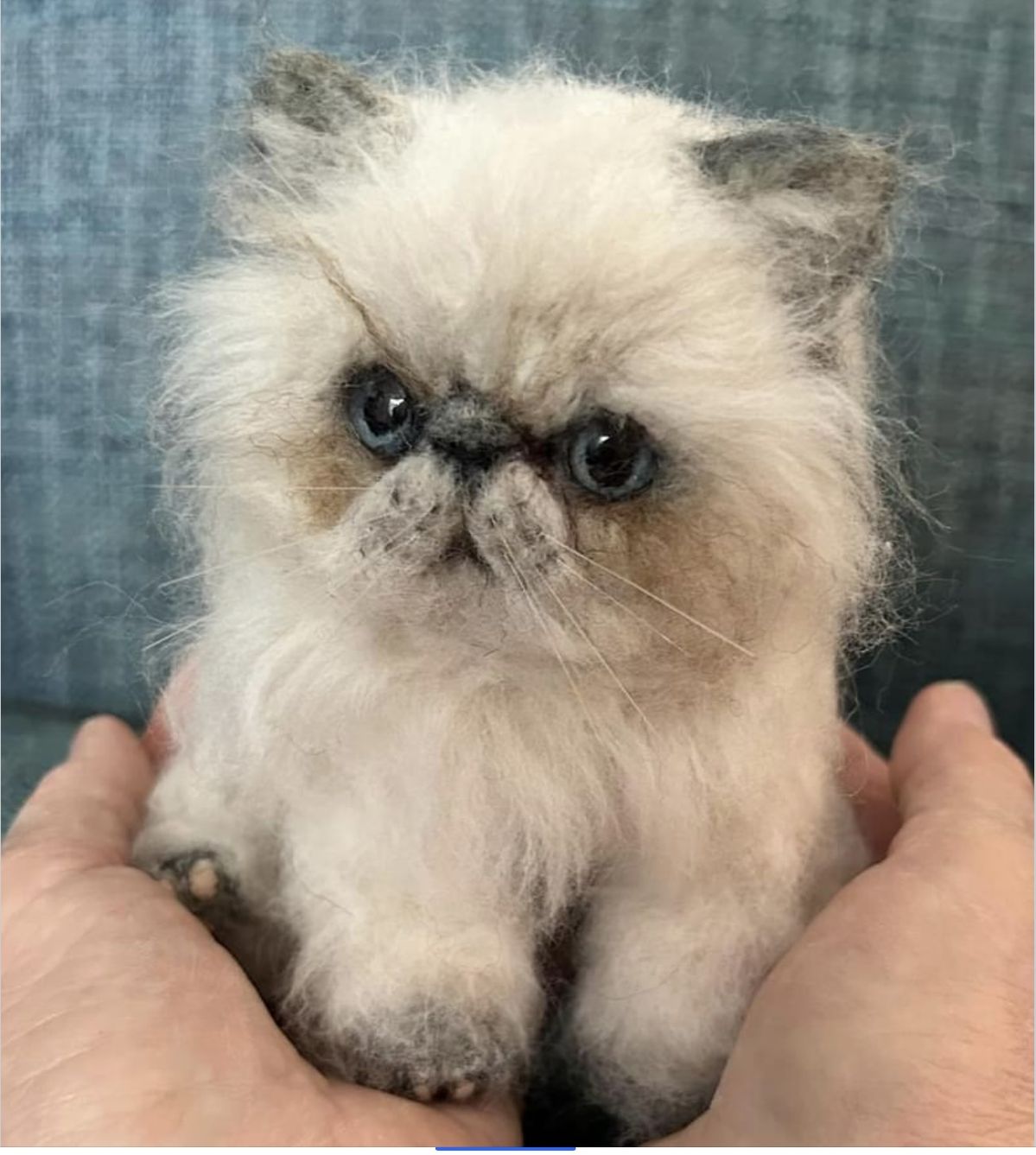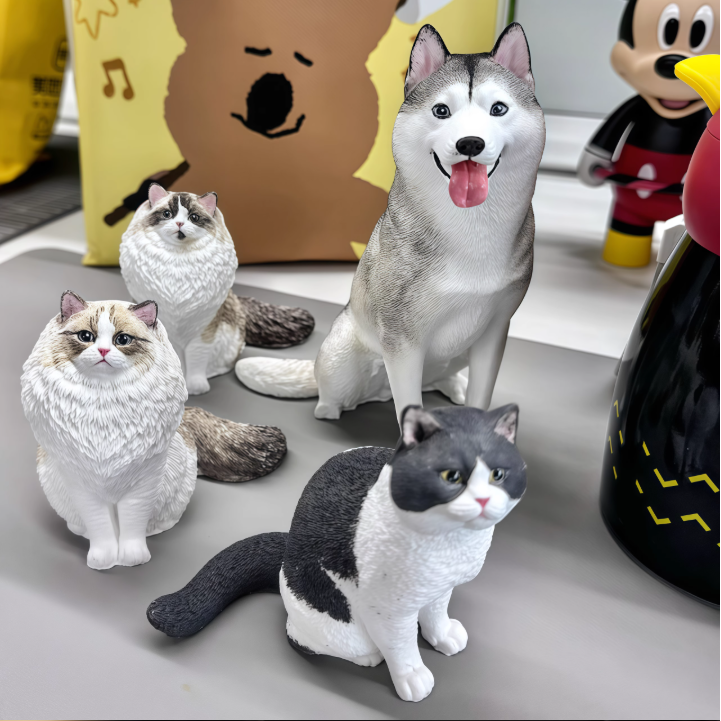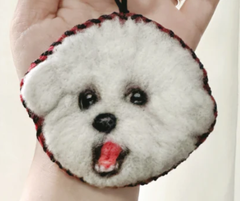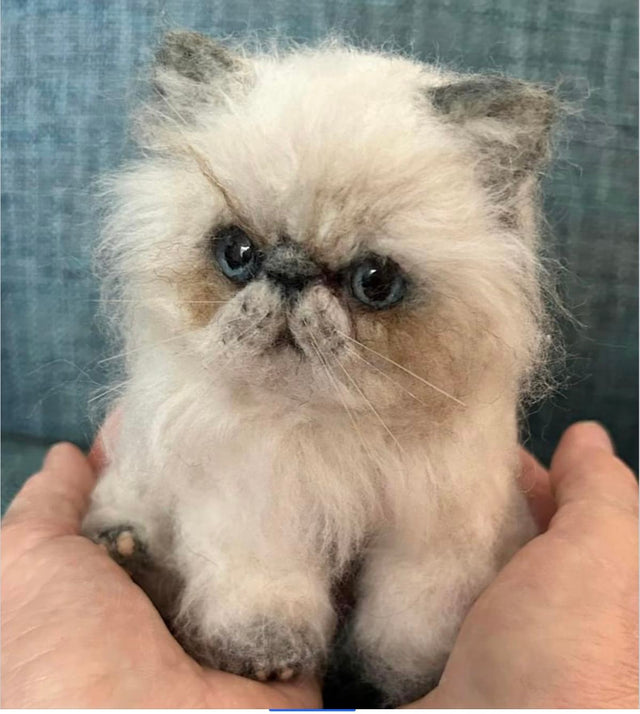Pawimprint’s Complete Guide to Planning a Pet Memorial

Losing a beloved pet can leave you feeling a wave of emotions. You might notice shock, grief, anger, guilt, or even loneliness. These feelings are normal, and everyone grieves in their own way. Sometimes, people try to hide their pain, but letting yourself feel and talk about your loss is a vital part of healing. As you start planning a pet memorial, you may wonder how to memorialize a pet in a way that feels right. Every step you take in planning helps you honor those special memories.
Key Takeaways
Let yourself feel sad and show your feelings. Talking about your pet and sharing memories helps you heal. Pick a memorial that feels right for you. You can have a pet funeral, make a memory garden, or create a digital tribute. Ask family and friends to share stories and help each other at memorials or funerals. Use special rituals or keepsakes to honor your pet and remember them. Get help from groups, books, or professionals. Help children and other pets deal with the loss too.
Immediate Steps After Loss
Saying Goodbye
Saying goodbye to your pet is never easy. You might feel lost or unsure about what to do next. Take a moment to sit with your pet and share your feelings. Some people talk to their pets, hold them, or even write a letter. These small acts can help you start the healing process. If you feel comfortable, you can invite close family or friends to join you. This first step is important when planning a pet funeral or pet memorial. It gives you a chance to honor your pet’s life and begin planning how you want to remember them.
Emotional Support
You do not have to face this alone. Grief can feel heavy, but reaching out for support makes a big difference. Here are some ways to care for yourself:
Allow yourself to feel sad, angry, or even guilty. These emotions are normal.
Eat regular meals, get enough sleep, and drink water.
Surround yourself with people who understand the bond you shared with your pet.
Talk openly about your loss with friends, family, or support groups.
Write in a journal or create a letter to your pet.
Consider joining a pet loss support group or reading about others’ experiences.
Tip: Sharing stories about your pet at a pet funeral or pet memorial can help everyone remember the good times and feel less alone.
Handling Remains
When planning a pet funeral, you have several choices for handling your pet’s remains. You can choose home burial, cemetery burial, cremation, or other options. Each choice has its own rules and steps. Always check local laws before you decide. Here is a quick guide:
Consideration |
What You Need to Know |
|---|---|
Burial Location |
Only on private property. Get permission if you rent. |
Burial Depth |
At least 3 feet deep to keep other animals safe. |
Distance from Water |
Stay 100-150 feet away from wells or streams. |
Local Laws |
Rules change by city and state. Always check before planning a pet funeral at home. |
Alternatives |
Pet cemeteries, cremation, or green burials are good options if home burial is not allowed. |
If you choose cremation, make sure the provider follows local rules and gives you a certificate. You can also ask your vet or a pet cemetery for help with planning. Keeping records of your pet’s burial or cremation helps with future questions.
Remember, planning a pet funeral or pet memorial is a personal journey. Take your time and choose what feels right for you and your family.
How to Memorialize a Pet
Losing a pet is tough, but you can remember them in many ways. If you want to know how to memorialize a pet, you have lots of options. You can plan a pet funeral, hold a memorial, or make a special tribute. Each choice helps you remember your pet and the love you shared.
Choosing a Location
Picking a place for your pet memorial matters a lot. You want somewhere that feels special and makes you feel better. Some people hold a pet funeral at home. This lets you keep your pet close and visit anytime. Others pick a pet cemetery, which is quiet and cared for.
Here are things to think about when picking a place:
If you want a private burial, you can pick a spot just for your pet. Communal burials put pets together in one area.
Pet cemeteries in cities may cost more than ones outside the city.
Memorial accessories like headstones or plaques help mark the spot and make it special.
You can keep custom urns in your garden, on a shelf, or in another favorite place.
Keepsakes like jewelry let you carry your pet’s memory with you.
Memory boxes can stay in your room or living room, keeping memories close.
Tip: Walk around your yard or a park you both liked. Think about where you and your pet had fun. That place might be perfect for your pet memorial.
Inviting Loved Ones
You do not have to do this alone. When you plan a memorial or pet funeral, you can invite friends and family who loved your pet. Sharing stories and memories helps everyone feel better. You might want a small group or a bigger event. It is your choice.
Here are ways to include others:
Send invites by text, email, or phone call.
Ask guests to bring photos or write letters about your pet.
Set up a memory table with toys, collars, or treats.
Let people share stories during the memorial.
Include kids by letting them draw pictures or read poems.
Note: Some people feel better when they invite their pet’s favorite animal friends. This can make the memorial even more special.
Meaningful Rituals
Rituals help you say goodbye and remember your pet’s life. Many cultures have special ways to honor pets. You can pick a tradition that feels right or make your own. If you want ideas for how to memorialize a pet, look at these from around the world:
Culture/Region |
Ritual Description |
Key Elements/Practices |
|---|---|---|
Mexico |
Day of the Dead altars for pets, honoring them with photos, food, and flowers. |
Altars, offerings, photos, treats |
Japan |
Pet funerals with home shrines, cremations at temples, offerings, incense, and prayers. |
Home shrines, cremation, offerings, incense, prayers |
Hawaii |
Lantern Floating Festival where lanterns are set afloat to honor pets and loved ones. |
Lantern release, messages, collective remembrance |
Native American |
Animal totem ceremonies, burial with grave goods, prayers, storytelling, and drumming. |
Totem ceremonies, grave goods, prayers, storytelling |
Scandinavia |
Burial mounds for pets with offerings of food and tools. |
Burial mounds, offerings, symbolic protection |
You can use these rituals for your own pet memorial. For example, you might float a lantern on water, build a small altar with your pet’s photo, or tell stories by a fire. Some families light candles, plant flowers, or let balloons go. These acts help you remember your pet and feel calm.
If you plan a memorial, you can mix different rituals. You might start with a prayer, share memories, and end by planting a tree. You can make the ceremony simple or detailed.
Callout: There is no wrong way to honor your pet. The most important thing is that the memorial feels right to you.
When you think about how to memorialize a pet, remember that planning a pet funeral or memorial is personal. You can invite loved ones, pick a special place, and add rituals that help you heal. Each step helps you celebrate your pet’s life and keep their memory alive.
Lasting Pet Memorial Tributes

Memorial Keepsakes
There are many ways to remember your pet. Pawimprint’s 3D Custom Glass Portraits are a special choice. These portraits show your pet in amazing detail. Many people say these portraits help them feel better. They bring comfort and make you feel close to your pet. The portraits can help turn sad feelings into happy memories. They also make your home feel cozy.
Pawimprint has other memorial items too. You can get wool felt portraits, keychains, or stuffed animal clones. Each item is made by hand to look like your pet. These keepsakes help you remember your pet’s special traits.
Here are some favorite pet memorial keepsakes:
Cremation jewelry like necklaces, bracelets, or rings that hold ashes or fur
Jewelry with photos or pawprints
Keychains with pictures or ashes inside
Custom urns and stones with laser designs
Memory boxes with collars, toys, or photos
Tip: Personalized memorial items help you remember your pet every day.
Memory Gardens
A memory garden is a quiet place to think about your pet. You can plant flowers, trees, or bushes that remind you of good times. Many people add a plaque, stone, or statue for their pet. Memory gardens help you feel close to your pet. They also help kids learn about loss in a gentle way.
Some good things about a memory garden are:
A calm spot to think and feel better
A living tribute that grows each year
A place for family and friends to meet and share stories
A way to show your pet’s personality with plants or decorations
You can add wind chimes, stones with names, or a bench to your garden.
Digital Memorials
Digital memorials help you honor your pet online. You can make a website, social media page, or video for your pet. These options let friends and family share memories from anywhere. Digital memorials help you feel less alone.
Some features of digital pet memorials are:
Anyone can visit and add memories from anywhere
You can add photos, music, and stories
There are guestbooks for sharing messages
You can connect with others for support
A digital pet memorial can keep your pet’s story alive for a long time.
Coping and Support
Grieving Process
Grief after losing a pet can feel like a rollercoaster. You might notice your feelings change from day to day. Many people move through different stages of grief. These stages often include:
1. Denial—You may expect to hear your pet’s paws or see them in their favorite spot. 2. Anger—You might feel upset with yourself, the vet, or even others who don’t understand your pain. 3. Bargaining—You could find yourself thinking, “What if I had done something different?” 4. Depression—Sadness can hit hard when you realize your pet is gone. 5. Acceptance—You start to remember your pet with more smiles than tears.
You might not go through these stages in order. Sometimes, you’ll feel a mix of emotions at once. That’s normal. Everyone’s journey is different. Give yourself time and space to heal.
Remember: Grief is real and valid. You loved your pet, and it’s okay to feel this loss deeply.
Support Resources
You don’t have to face this alone. Many people find comfort in talking with others who understand. A pet loss support group can help you share your story and listen to others. You can also find help through:
Books written by experts, like Saying Good-Bye to the Pet You Love.
Webinars and online talks with grief specialists.
Hotlines that offer someone to talk to, even late at night.
Counseling services at some veterinary hospitals.
Online resources and guided journals for working through your feelings.
Some organizations, like Lap of Love and the Association for Pet Loss and Bereavement, offer support groups and helpful information. These resources can guide you through tough days and remind you that you’re not alone.
Helping Children and Pets
Children often feel confused or scared after a pet dies. You can help by using clear words like “death” and “dying.” Avoid saying things like “put to sleep,” which can be confusing. Let kids draw pictures, write stories, or make a pet memorial together. These activities help them share their feelings.
Let your child know it’s okay to feel sad, angry, or even guilty. Share your own feelings, too. This shows them that grief is normal. Don’t rush to get a new pet. Give everyone time to heal.
Surviving pets may grieve, too. Watch for changes in eating, sleeping, or behavior. Keep routines steady and spend extra time with them. Offer comfort with favorite toys or blankets. If your pet seems very sad or stops eating, talk to your vet for advice.
Tip: Creating a pet memorial as a family can help everyone, including children and pets, feel connected and supported.
Honoring Anniversaries
Special Dates
Special dates like your pet’s birthday or adoption day can make you feel sad or happy. The anniversary of your pet’s passing may bring strong feelings too. You can remember these days with small acts or bigger celebrations. Many people make personalized memorials, like engraved plaques or stones. Some save paw prints in clay or ink as keepsakes. Planting a tree or flower in your yard helps memories grow every year.
Here are some ways to honor these special dates: You can visit your pet’s favorite spot and leave flowers or treats. Make a scrapbook or video with photos and stories. Wear jewelry that holds ashes or a photo of your pet. Donate to an animal shelter in your pet’s name. You can think quietly or share memories with friends and family.
Tip: Naming the anniversary of your pet’s passing as a special day helps you show kindness and remember your pet.
New Traditions
You can start new traditions to remember your pet. Some people plant a flower that blooms near their pet’s birthday. Others volunteer at animal shelters or make a “Whiskered Wishes” jar with favorite memories. You might write a song or poem about your pet. Visiting your pet’s grave or ashes site and sharing stories can become a yearly ritual.
Make a quilt from old pet blankets.
Host a dinner to share memories with friends and family.
Keep doing activities you enjoyed with your pet, like walking in a favorite park.
Callout: Making new traditions helps you celebrate your pet’s life and heal.
Maintaining Memorials
Taking care of your pet memorial keeps your bond strong. You can clean up a memory garden, polish a plaque, or put fresh flowers at a gravesite. Some people keep special things, like a water bowl or collar, in a safe place. Online memorials let you add new photos and stories anytime.
Memorial Type |
How to Maintain |
Why It Matters |
|---|---|---|
Memory Garden |
Water plants, pull weeds |
Keeps tribute beautiful |
Plaque/Stone |
Clean often, check for damage |
Honors your pet’s legacy |
Keepsakes |
Store safely, display proudly |
Brings comfort daily |
Digital Memorial |
Add new memories, share updates |
Connects with others |
Doing remembrance activities, online or offline, helps you deal with feelings and honor your pet’s legacy. These activities give comfort, lower stress, and help you heal over time.
Every step you take to honor your pet’s memory matters. When you choose readings, music, or keepsakes that remind you of your pet, you create a special tribute. You might light a candle, plant a flower, or share stories with friends. These acts help you heal and keep your pet’s spirit close. If you need extra support, many groups and online resources are ready to help you through this journey.
Remember: Healing takes time, and you are not alone.
FAQ
How soon should you plan a pet memorial?
You can plan a pet memorial whenever you feel ready. Some people do it right away. Others wait until they feel less overwhelmed. Trust your feelings and take your time.
What can you include in a pet memorial service?
You can share stories, display photos, play music, or light candles. Some people read poems or plant flowers. You decide what feels right for you and your pet.
Can you create a pet memorial if you do not have your pet’s remains?
Absolutely! You can make a memory garden, create a digital tribute, or order a custom keepsake. Your love and memories matter most.
How do you help children cope with pet loss?
Let kids talk about their feelings. Use simple words. Encourage them to draw pictures or write letters to your pet. Include them in memorial activities.
What makes Pawimprint’s 3D Custom Glass Portraits special?
Pawimprint’s 3D Custom Glass Portraits capture your pet’s unique look and spirit. Each piece is handmade and lifelike. Many people say these portraits bring comfort and keep memories alive.

